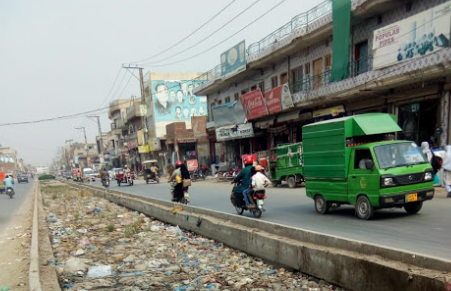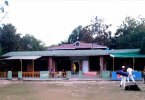Reporting in collaboration with Hammad Ghafoor
The contamination of Lahore’s River Ravi has reached dangerous heights and locals and scientists are concerned by the level of pollution.
For years Lahore residents have bathed in the river on hot days but after decades of contamination from untreated domestic and industrial wastewater the Ravi has become too toxic for recreational purposes or irrigation.
The Ravi – which flows from the Himalayas in north-western India through Pakistan and is one of the “Five Rivers” which give the Punjab region its name – has earned the moniker “killer canal” in its 60 kilometre stretch through the city of Lahore.
In 2015 World Wildlife Fund Pakistan Director General Hammad Naqi called the health of the Ravi a “critical matter” requiring “strong steps” by the government, but four years later the state of the river has not improved.
The Integrated Master Plan of Lahore 2021 includes remedial measures for the waterway including a River Ravi Urban Development Project, which will revive the water flow and protect the river from municipal waste through the installation of plants for the collection and treatment of wastewater.
The Punjab government also has plans to save the Ravi aquifer, although no concrete details have been released.
Osama Anwar, a student at Forman Christian College in Lahore, has grown up witnessing the deterioration of the Ravi.
He is one of the many locals concerned by the state of the river.
“It’s really urgent that we deal with it right now, otherwise a lot of people will get sick,” Mr Anwar said.
“I think water filtration plants should be deployed at different corners of the city so people can have clean water, so even if they don’t have the ability to buy expensive bottled water they could go to the filtered water plants and get some.”
Ravi becomes a dirty drain during the drier winter months as the flow of water slows through the canal, which contaminates groundwater and promotes the spread of harmful pathogenic bacteria in people.
Various studies conducted by the World Wildlife Fund and other agencies have found that dangerous heavy metals, high arsenic levels and sewage in the Ravi are causing diseases such as typhoid, dysentery, cholera and hepatitis A and C.
Plans for the Ravi’s revival were reinvigorated by a 2012 World Wildlife Fund report which found the river too badly contaminated to be used for watering crops or livestock drinking.
The report prompted a Lahore High Court Commission into the Ravi’s pollution that same year which discovered over a thousand factories dumping chemical and medical waste into the water.
The Punjab Environment Protection Department’s director Naseemur Rehman Shah told Pakistan Today in October 2017 that chemicals, food, plastic, poultry, paper, textiles, leather, pesticides, paint and pharmaceuticals are some of the items that end up in the Ravi.
The canal is completely clogged at certain points along Lahore’s busy streets, where cars and motorbikes speed past stagnant water filled with plastic bags, styrofoam packaging, fecal matter and heavy metals such as nickel and lead.
The river ecology has been decimated over the past 20 years which has negatively impacted on the socio-economic status and physical health of the communities living along its banks.
In his 2018 documentary Ravi: A River of Stories, Pakistani filmmaker Halar Khoso explores the significance of the river for just some of the people who rely on its waters.
One oarsman, known only as Shahid, takes passengers on boat rides along the Ravi. He earns about 500 rupees ($4.90) a day and his livelihood could be threatened if pollution levels rise and waste continues to seep into the water.
“The river is beautiful,” Shahid told Mr Khoso.
“It’s very good. I stay here peacefully.”
Featured Image: Lahore’s polluted River Ravi on Monday, April 8, 2019. The river’s deteriorating health poses significant risks to locals. Courtesy of: Hammad Ghafoor







